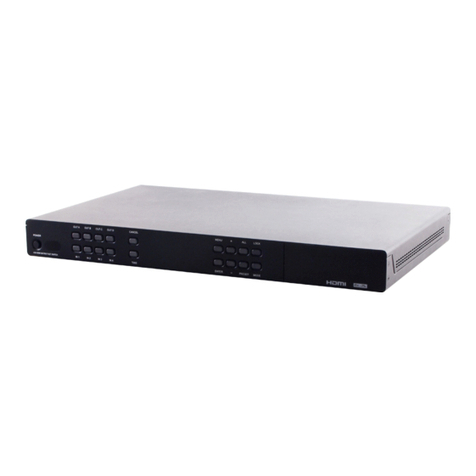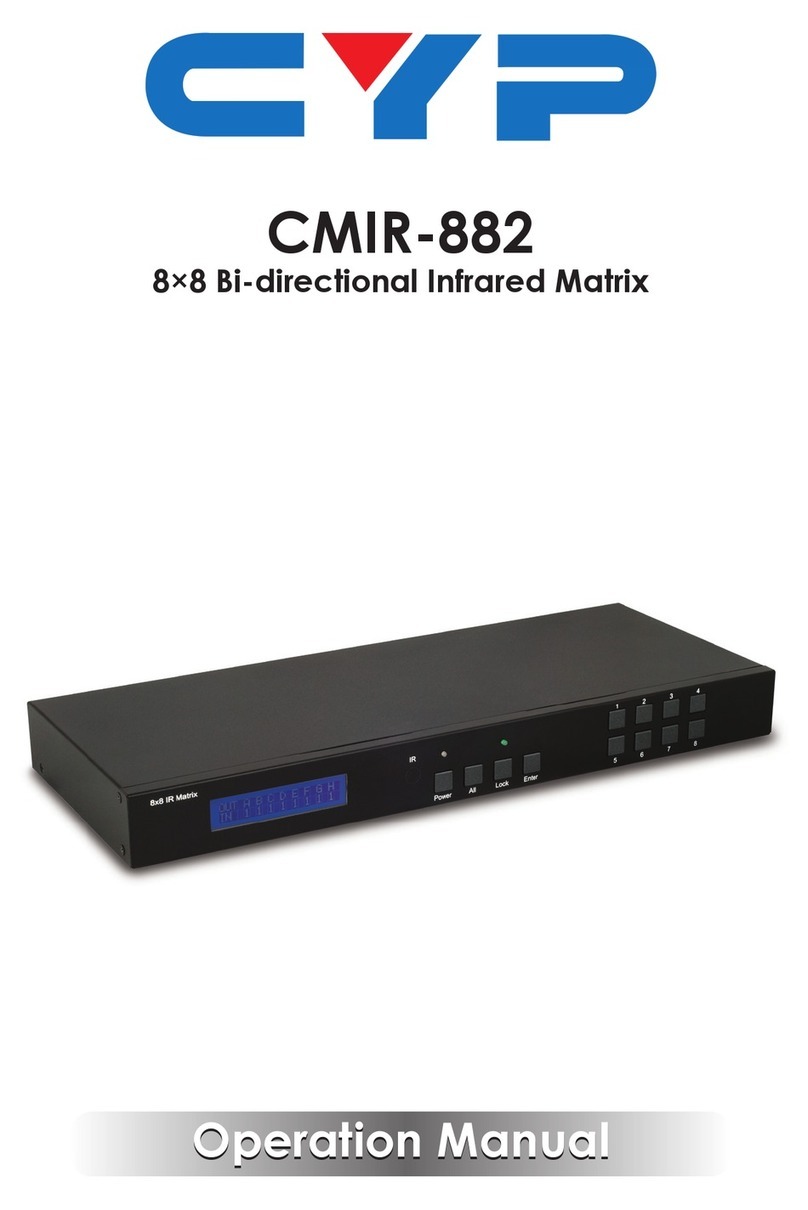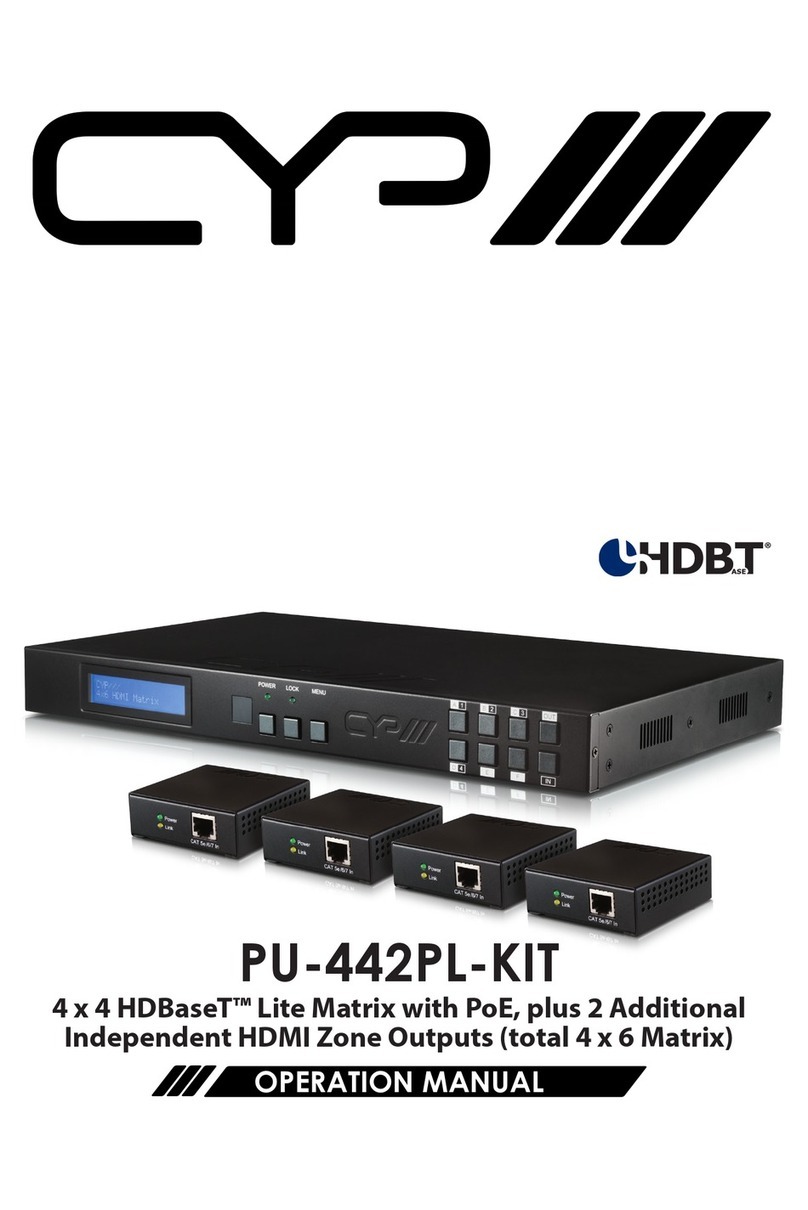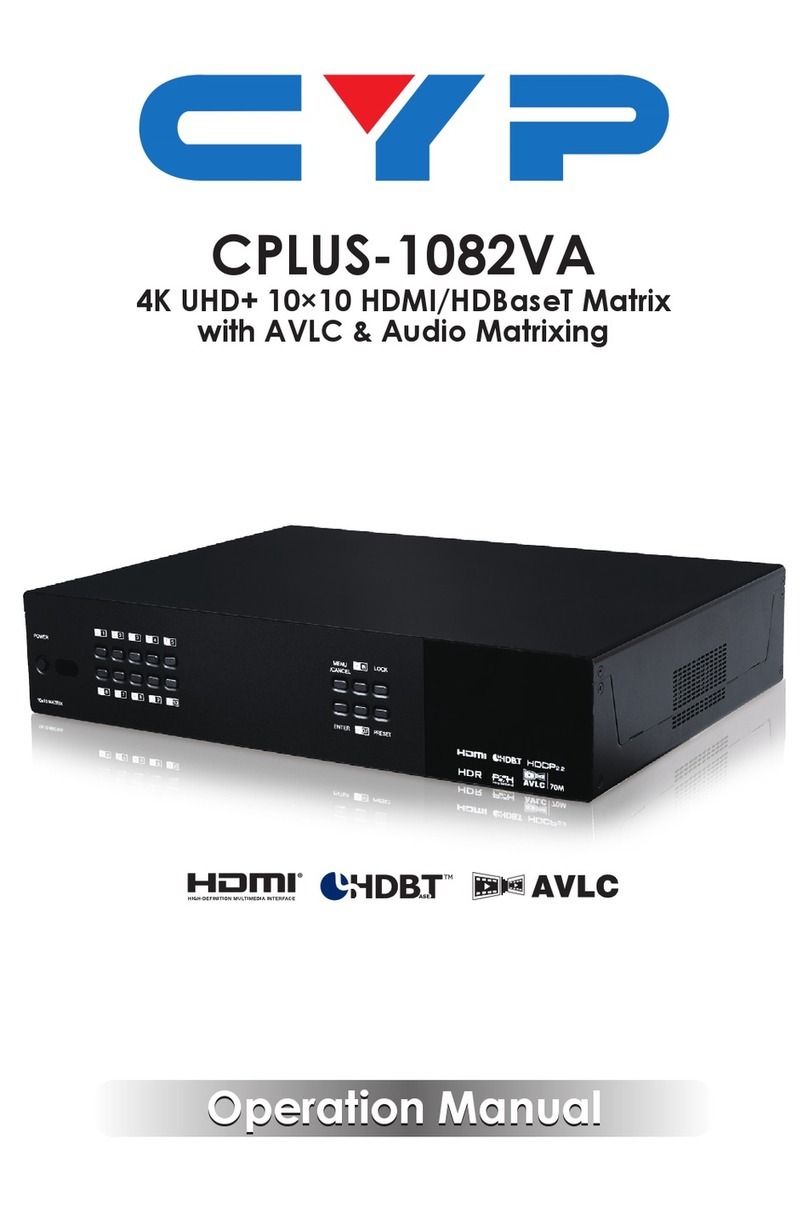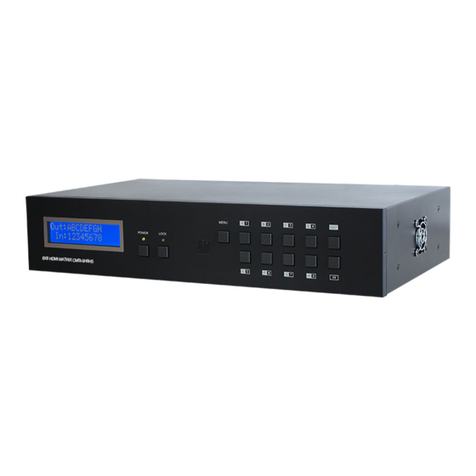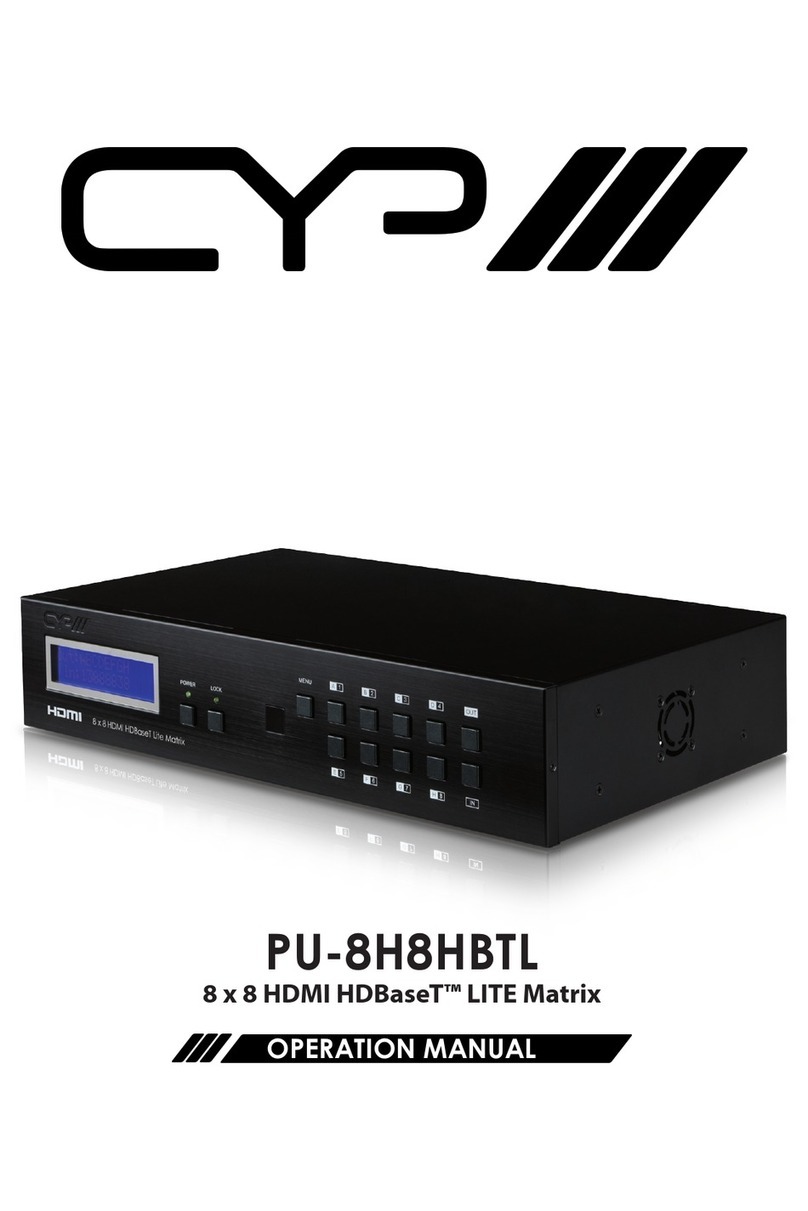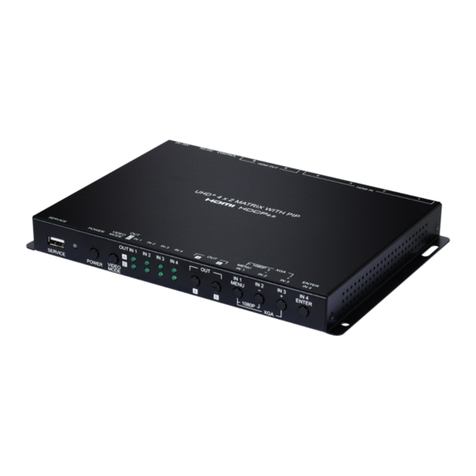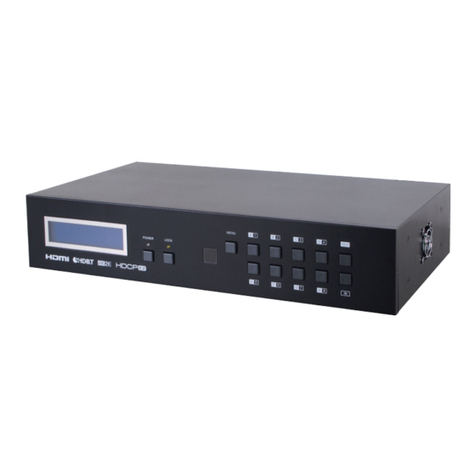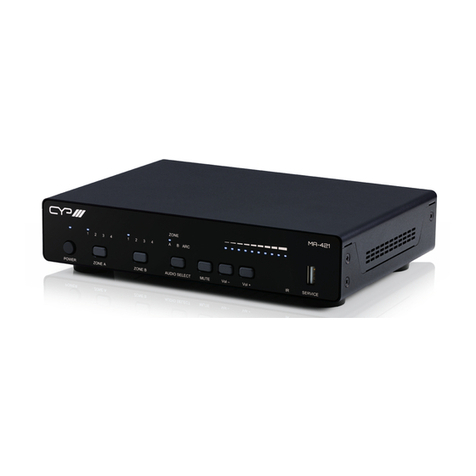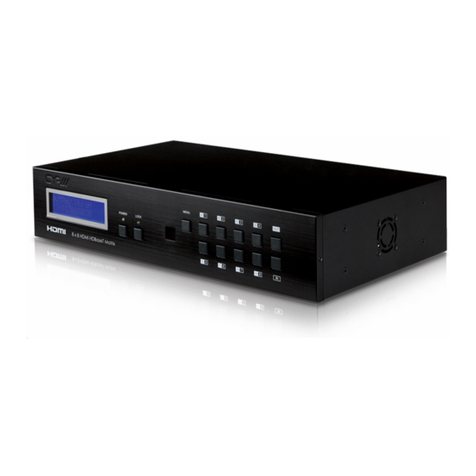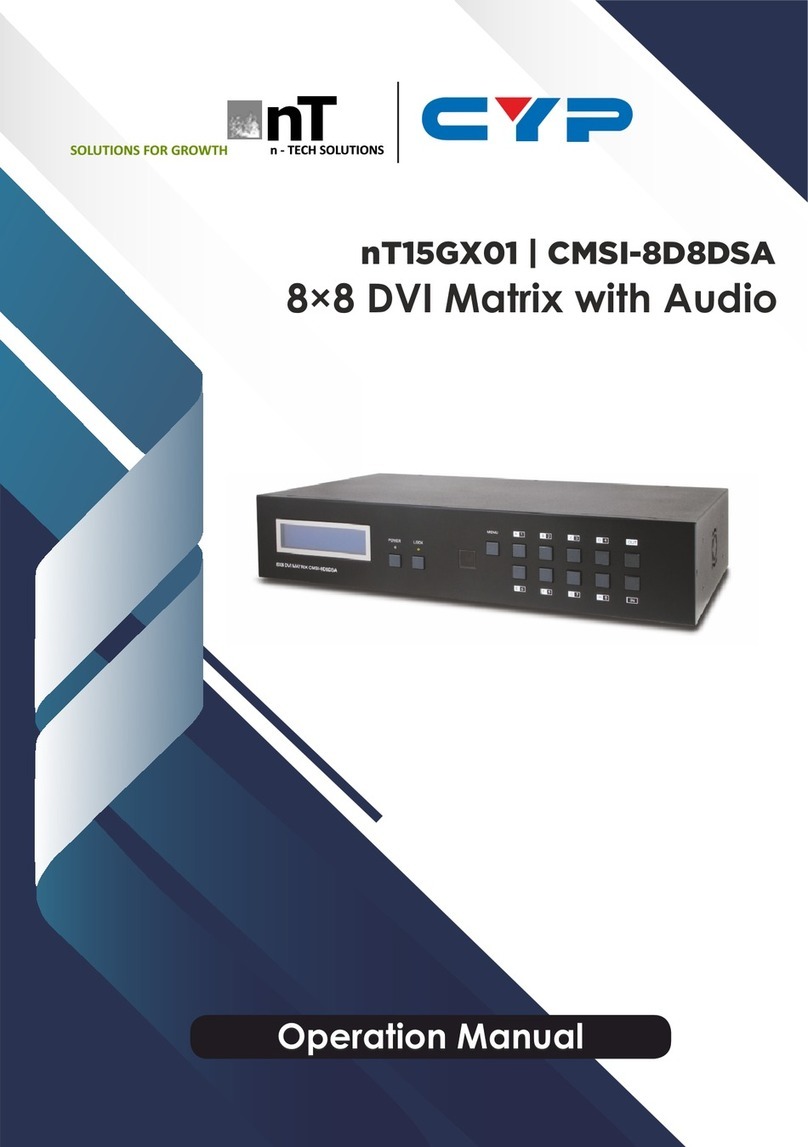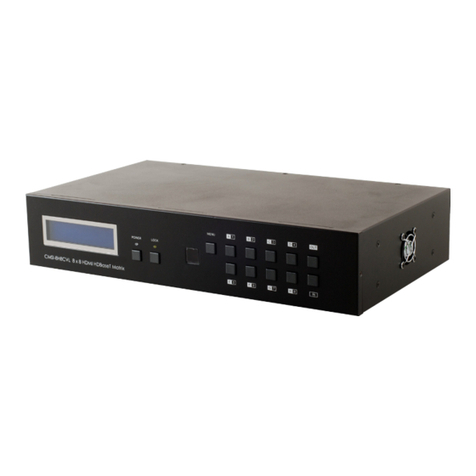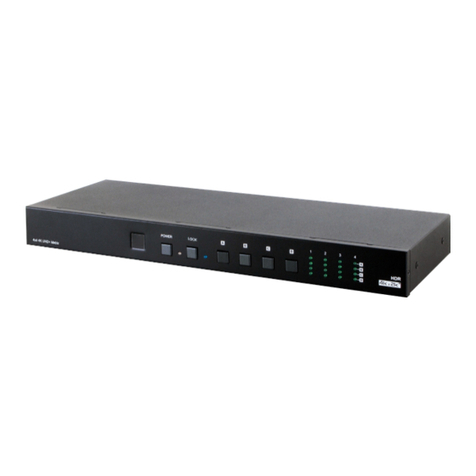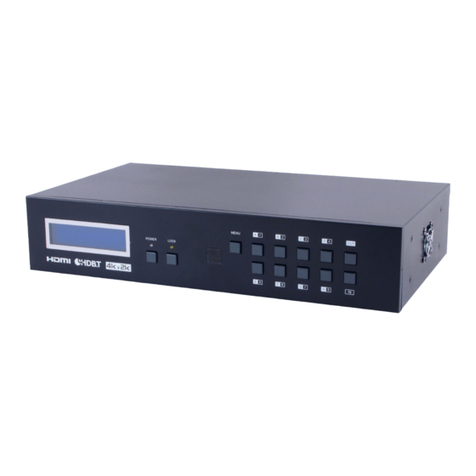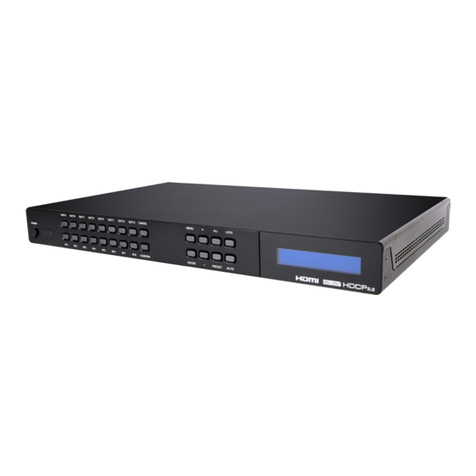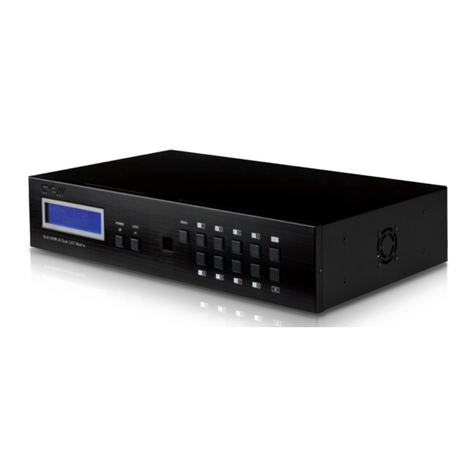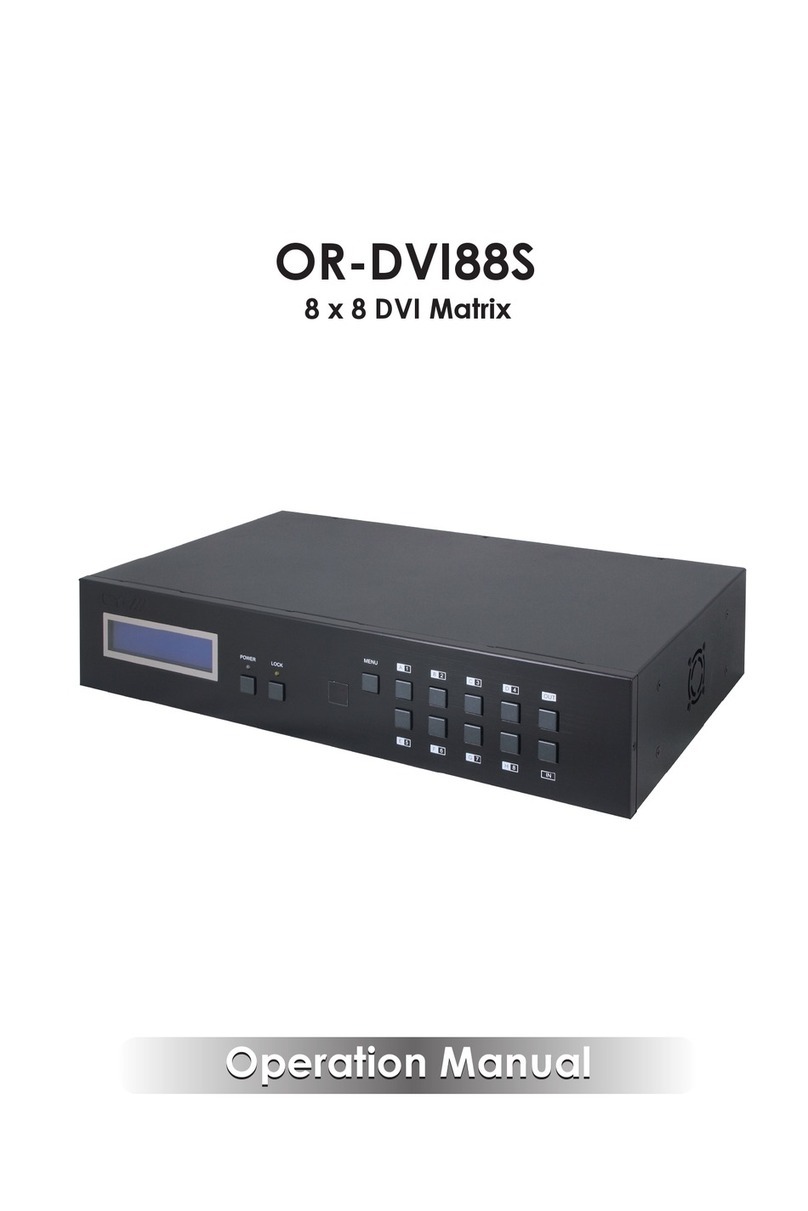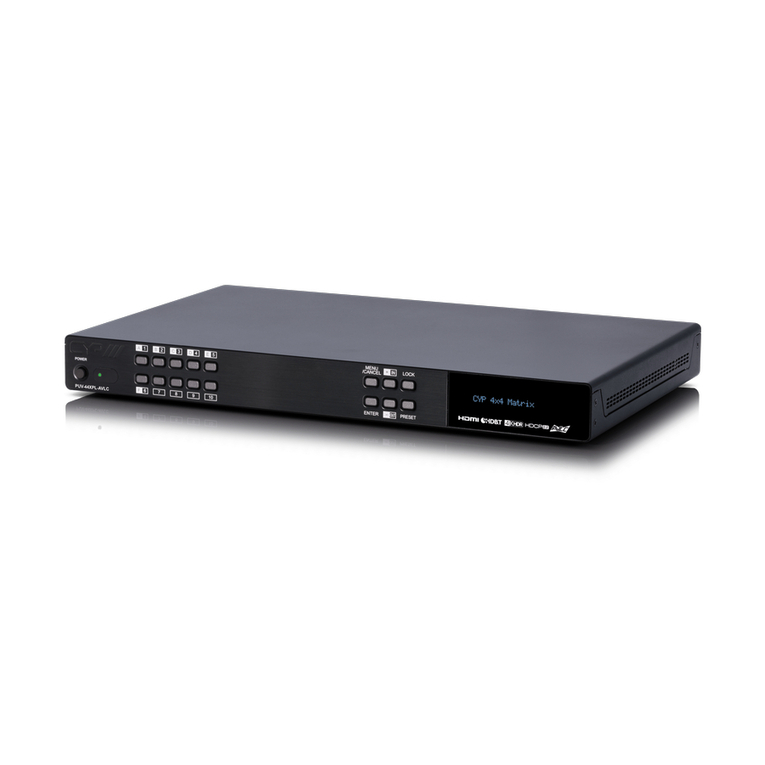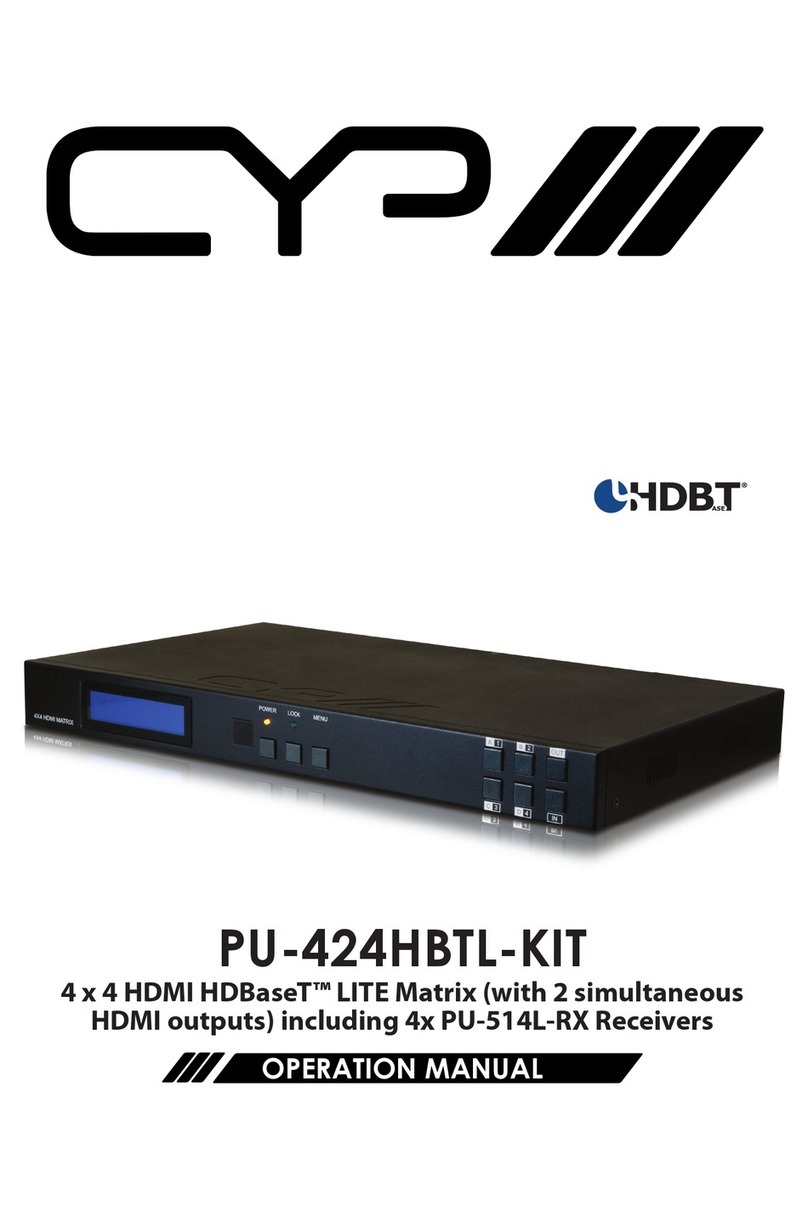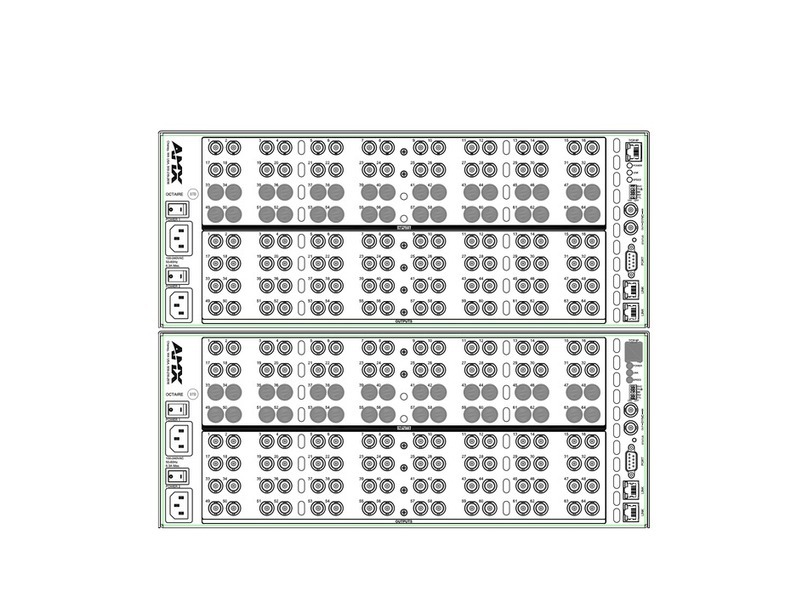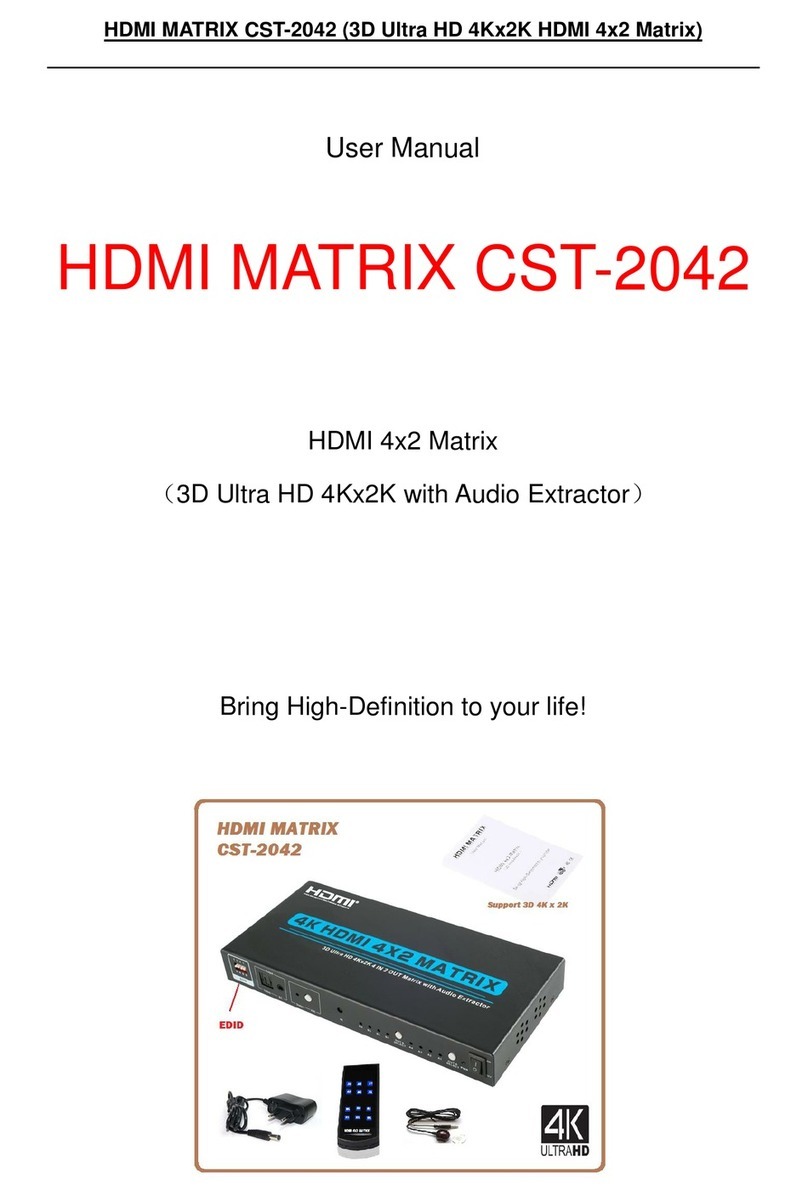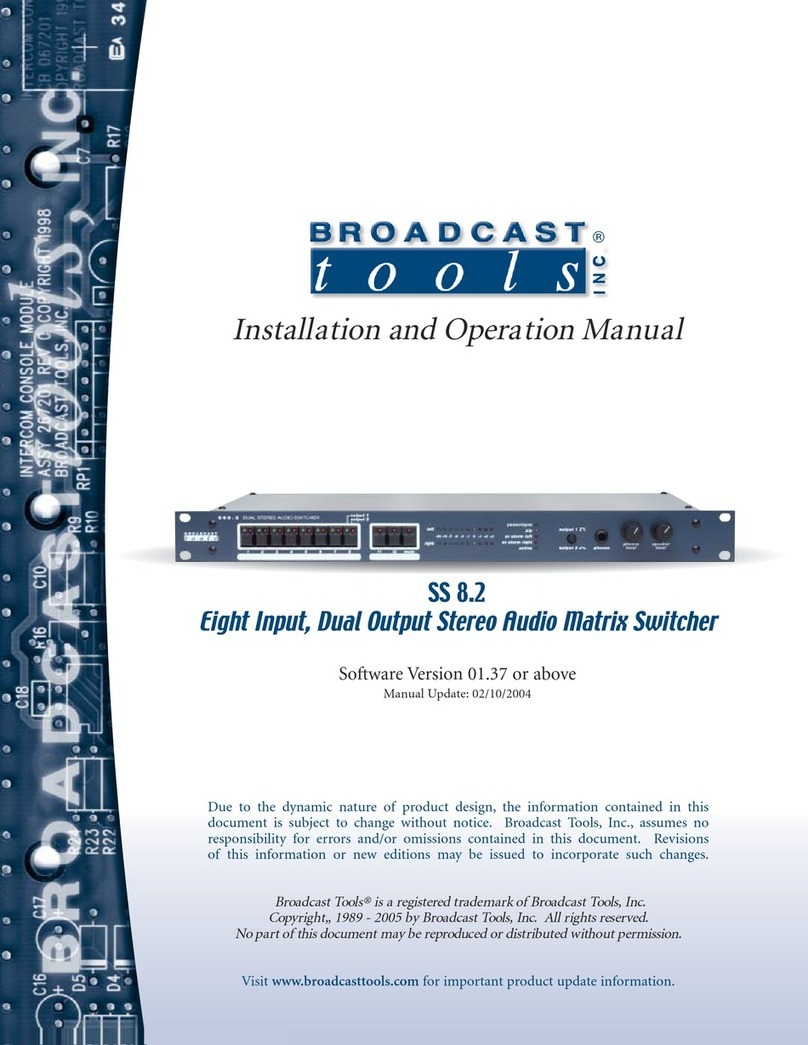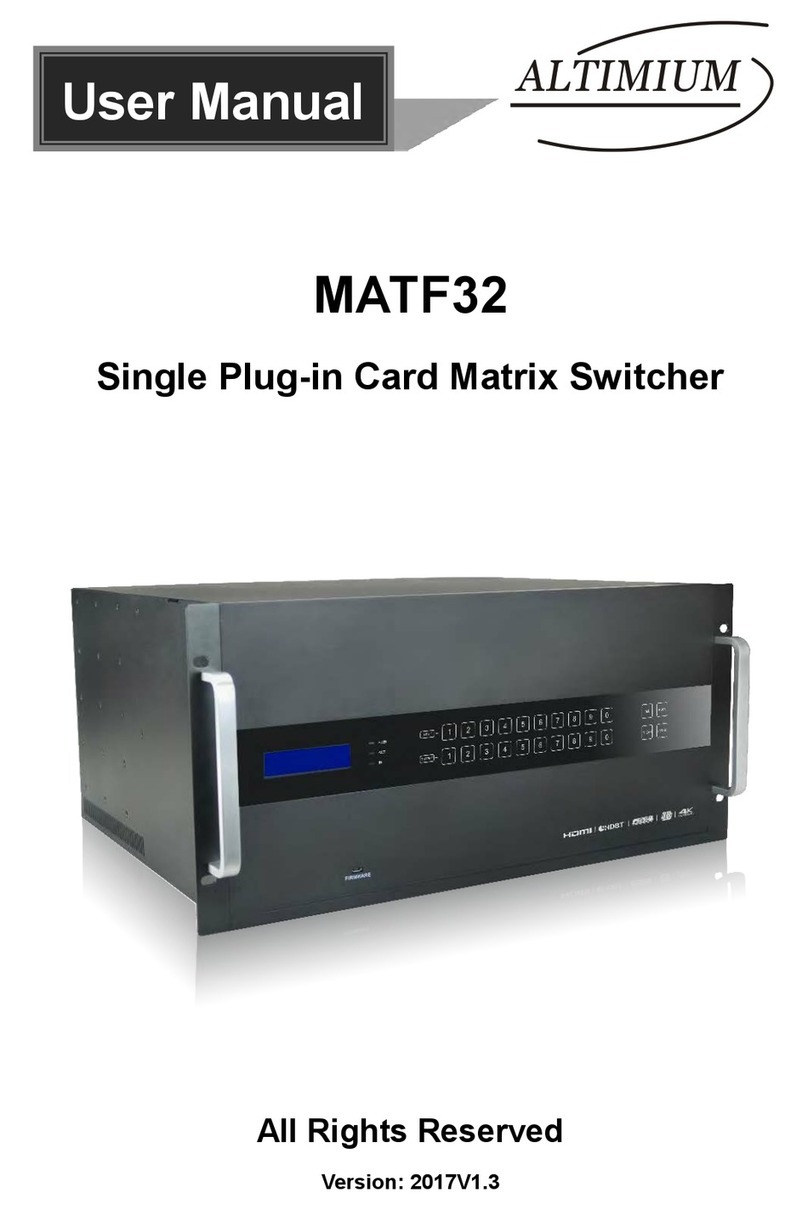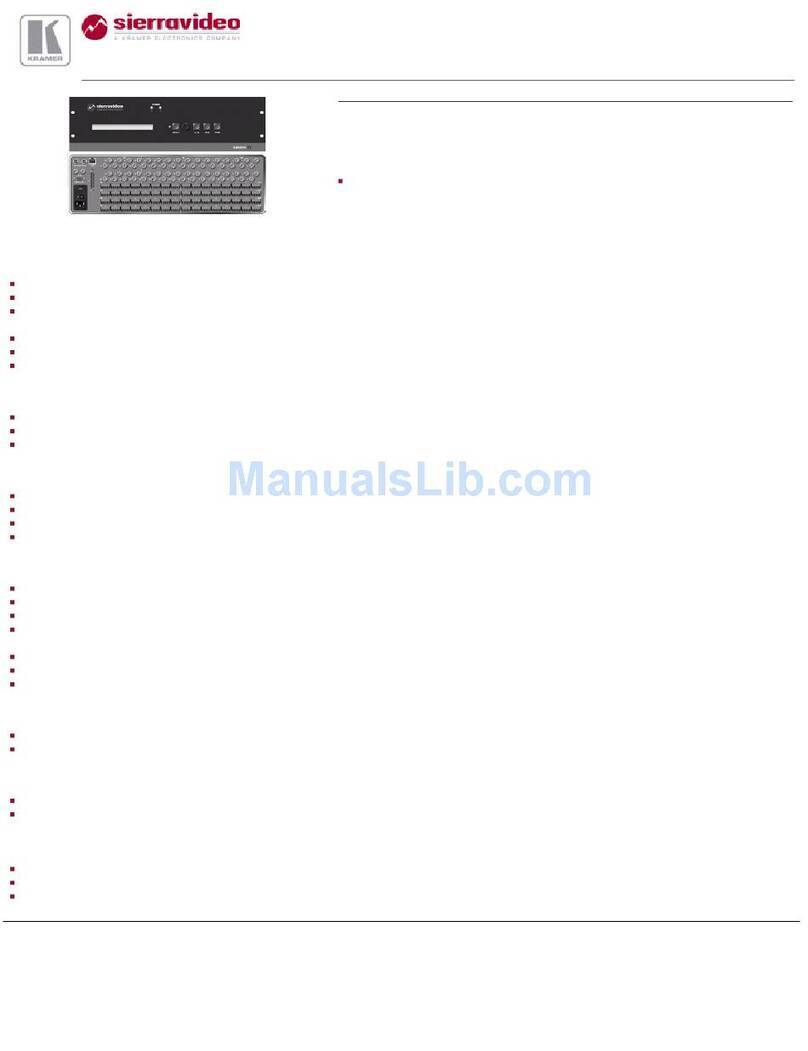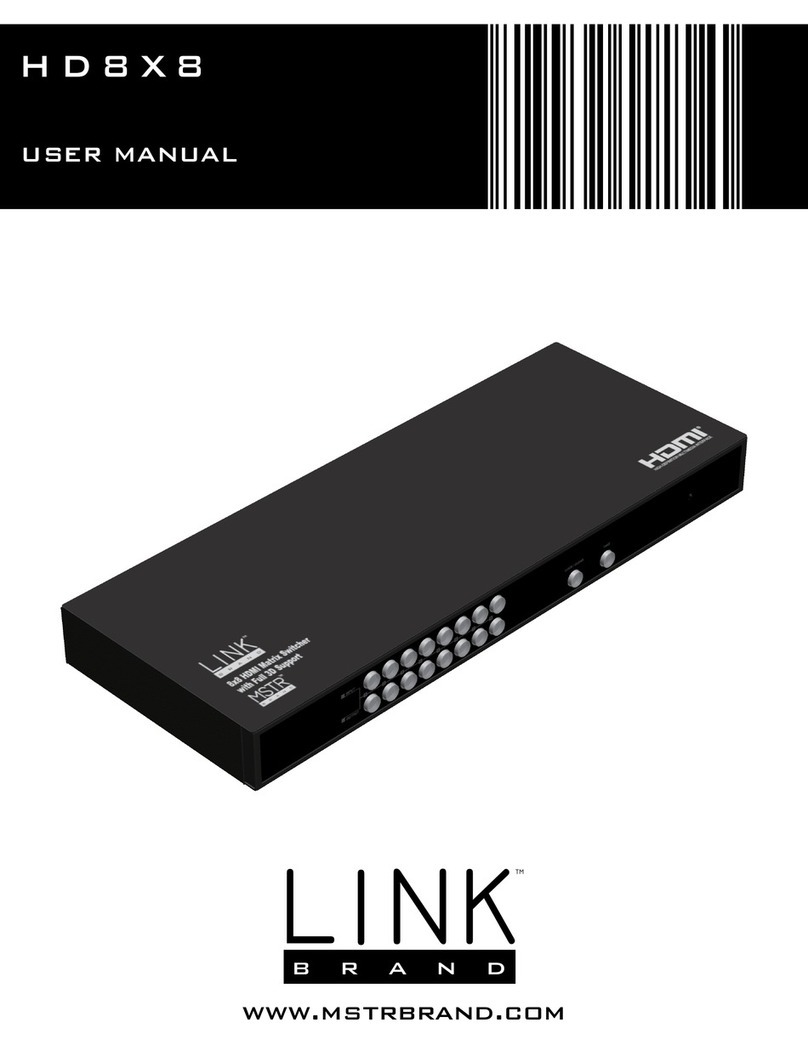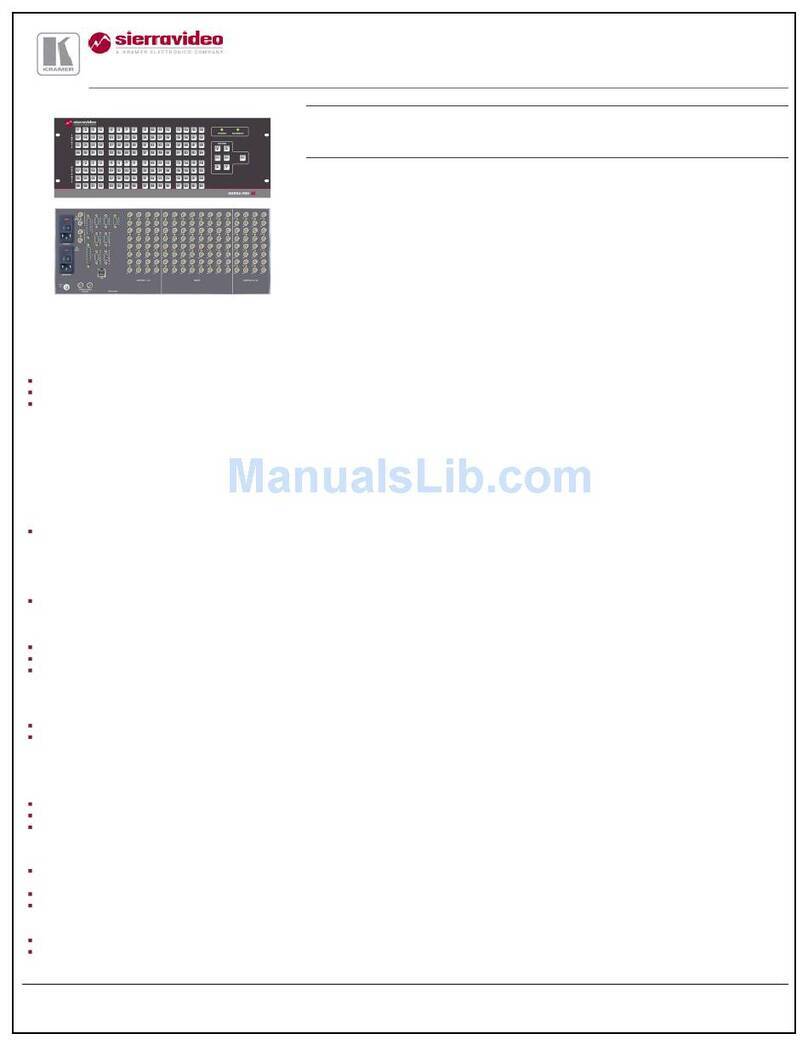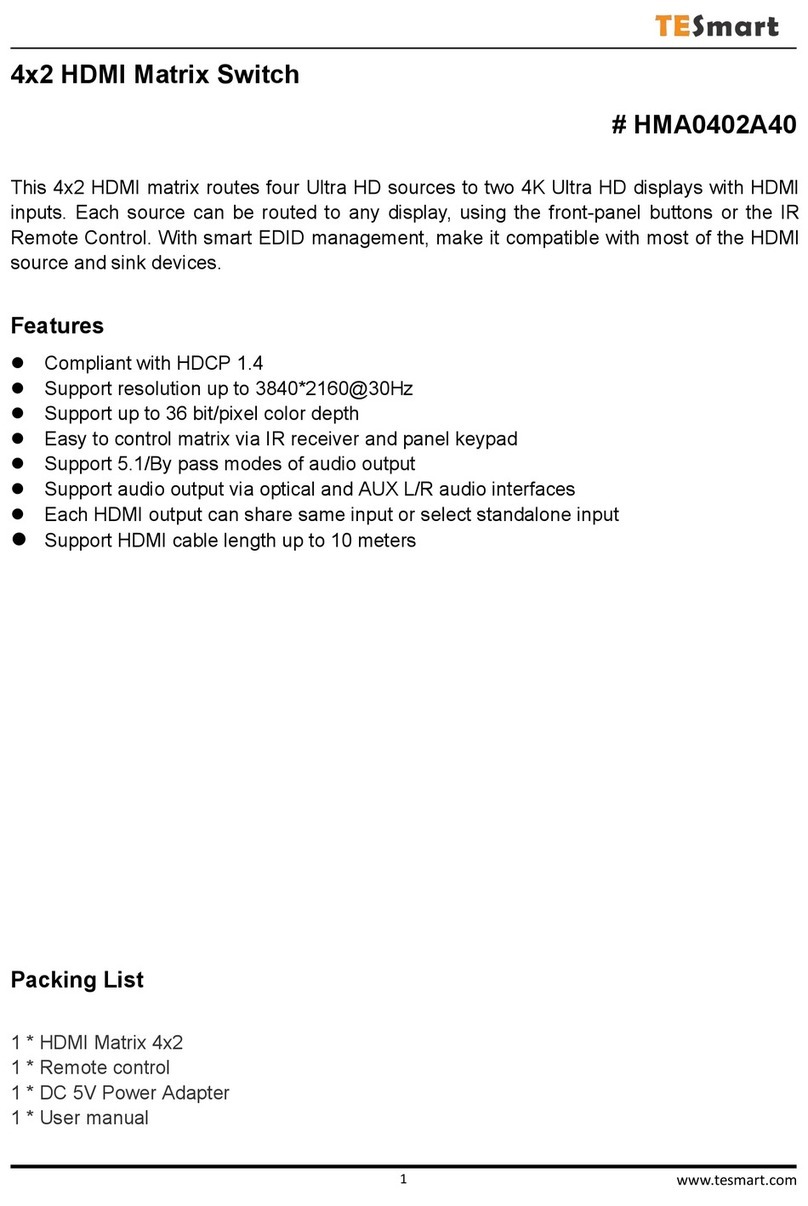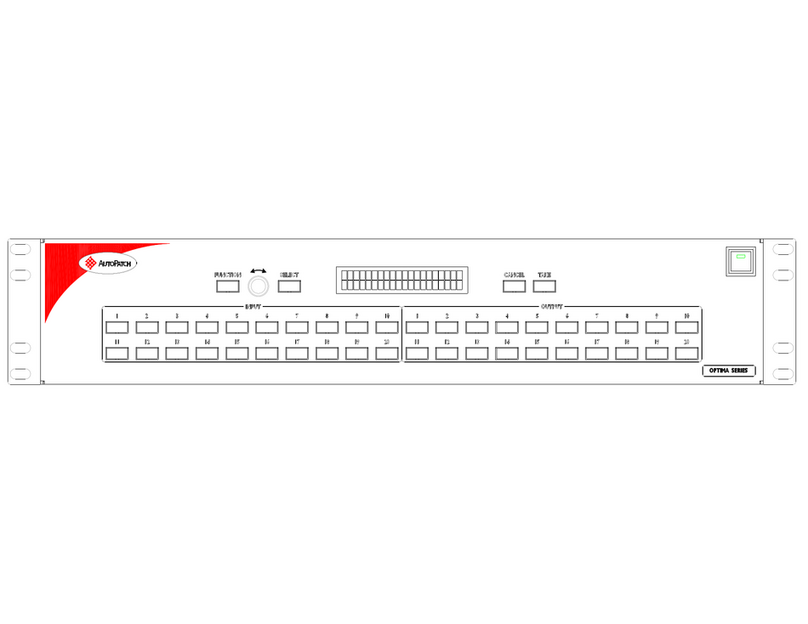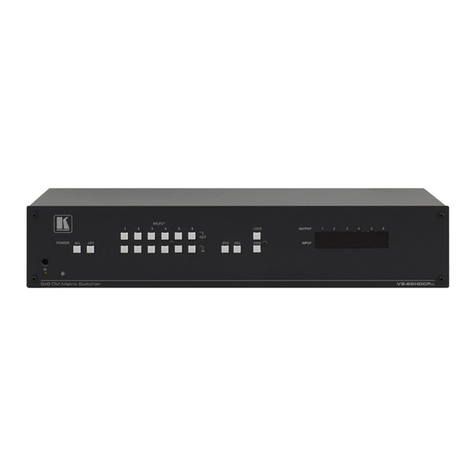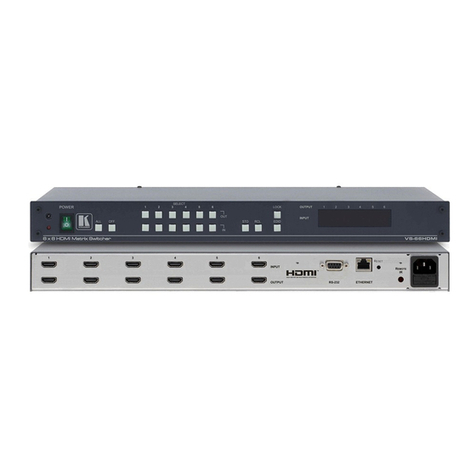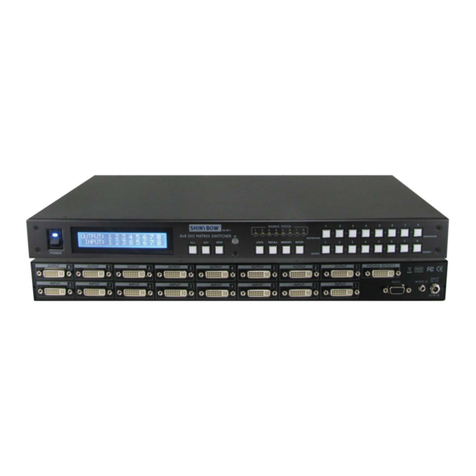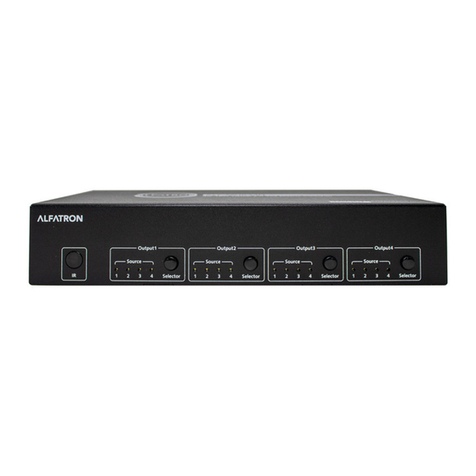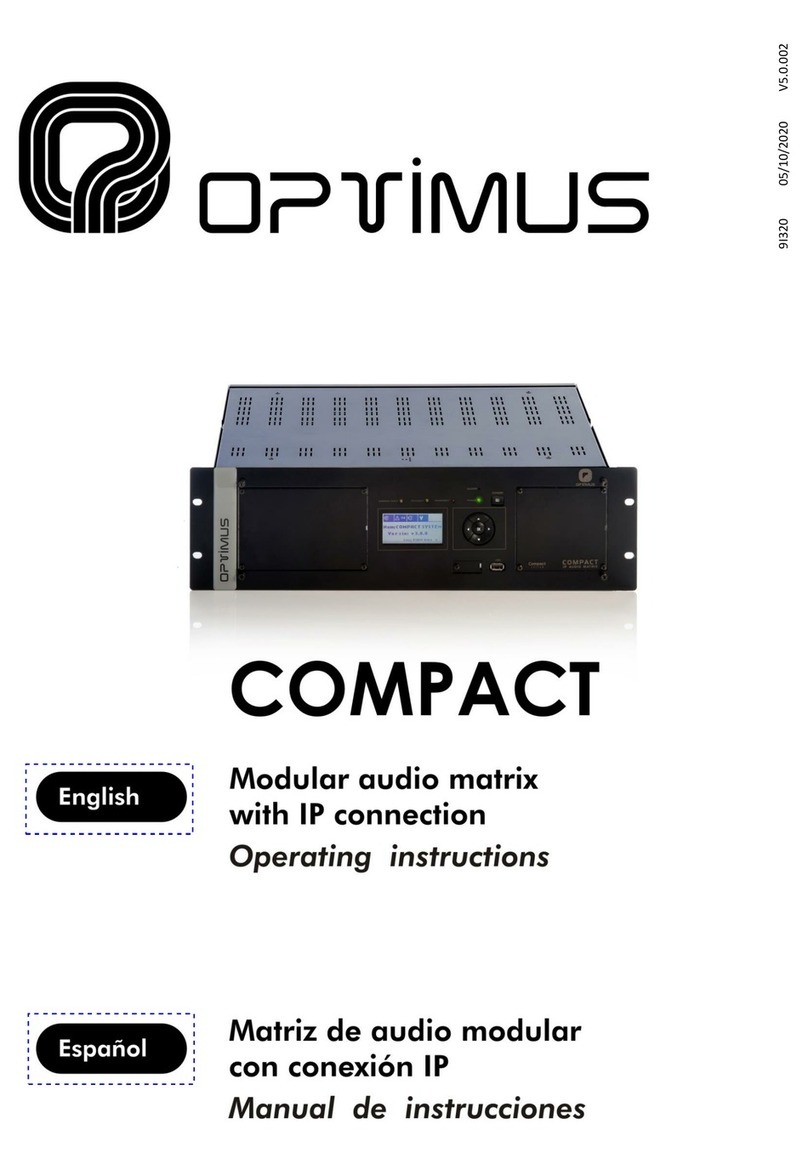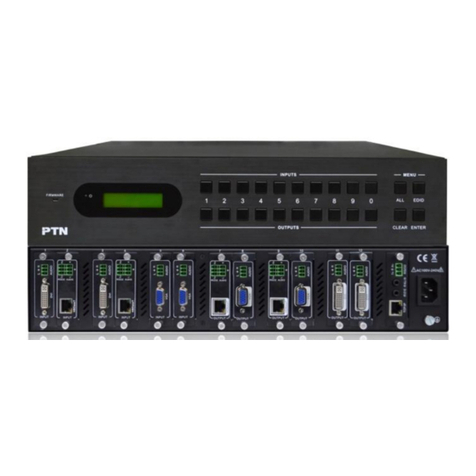1CONTROL: This port is the link for Telnet or Web GUI controls, connect
to an active Ethernet link with an RJ45 terminated cable (for further
details, please refer to section 6.8 & 6.9).
Warning: Please do not connect this port directly to the PC/Laptop as the
Telnet function will not work.
2RS-232: Connect to a PC or control system with D-Sub 9-pin cable
for the transmission of RS-232 commands.
3ALL IR OUT: Connect to the IR blaster for IR signal transmission to
the source side. Place the IR blaster in direct line-of-sight of the
equipment to be controlled for it will blaster out all signal received
from the IR IN at the receiver sides.
4ALL IR IN: Connect to the IR extender for IR signal reception. Ensure
that remote being used is within the direct line-of-sight of the IR
extender for it will send out the signal to all receiver's IR OUT.
5SERVICE: Manufacturer use only.
6IR OUT A~H: Connect to the IR blasters for IR signal transmission.
Place the IR blaster in direct line-of-sight of the equipment to be
controlled for it will blaster out the IR signal received from the
receiver side choosen by input selection.
7IR IN 1~8: Connect to the IR extenders for IR signal reception. Ensure
that the remote being used is within the direct line-of-sight of the IR
extender for it will send out the IR signal to the selected receiver's
IR OUT.
8CAT5e/6/7 OUT A~H: Connect from these CAT outputs to the CAT
input port of the receiver units with a single CAT5e/6/7 cable for HDMI
Audio/Video and IR/RS-232 control signal transmission.
9HDMI IN 1~8: Connect to the HDMI input source devices such as a
DVD player or a Set-top Box with HDMI cable or DVI to HDMI cable.
10 DC 24V: Plug the 24 V DC power supply into the unit and connect the
adaptor to an AC outlet.
